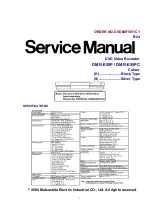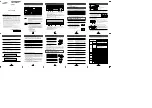
Motor hunting occurs.
• Adjust the parameters that control hunting.
• Set the hunting prevention gain (n1-02).
LED Operator Display
Fault Name
PF
Input Phase Loss
Drive input power has an open phase or has a large imbalance of voltage between
phases. Detected when L8-05 = 1 (enabled).
Cause
Possible Solution
There is phase loss in the drive
input power.
• Check for wiring errors in the main circuit drive input power.
• Correct the wiring.
There is loose wiring in the drive
input power terminals.
• Ensure the terminals are tightened properly.
• Apply the tightening torque specified in this manual to fasten the terminals.
Refer to Wire Gauges and Tightening Torque on page 50
There is excessive fluctuation in the
drive input power voltage.
• Check the voltage from the drive input power.
• Review the possible solutions for stabilizing the drive input power.
• Disable Input Phase Loss Detection (L8-05 = “0”). PF is detected if DC bus
ripple is too high. If it is disabled, there is no fault but the ripple is still too
high, thereby the capacitors are stressed more and lose lifetime.
There is poor balance between
voltage phases.
Stabilize drive input power or disable phase loss detection.
The main circuit capacitors are
worn.
• Check the maintenance time for the capacitors (U4-05).
• Replace the drive if U4-05 is greater than 90%.
• Check for anything wrong with the drive input power.
• If nothing is wrong with the drive input power, try the following solutions if
the alarm continues:
• Disable Input Phase Loss Protection selection (L8-05 = “0”). PF is detected if
DC bus ripple is too high. If it is disabled, there is no fault but the ripple is still
too high, thereby the capacitors are stressed more and lose lifetime.
• Replace the drive.
LED Operator Display
Fault Name
rH
Braking Resistor Overheat
Braking resistor protection was triggered.
Fault detection is enabled when L8-01 = 1 (disabled as a default).
Note:
The magnitude of the braking load trips the braking resistor overheat alarm,
NOT the surface temperature. Using the braking resistor more frequently than its
rating trips the alarm even when the braking resistor surface is not very hot.
Cause
Possible Solution
Deceleration time is too short and
excessive regenerative energy is
flowing back into the drive.
• Check the load, deceleration time and speed.
• Reduce the load.
• Increase the acceleration and deceleration times (C1-01 through C1-04).
• Replace the braking option with a larger device that can handle the power that
is discharged.
Excessive braking inertia.
Recalculate braking load and braking power. Then try reducing the braking load
and checking the braking resistor settings and improve braking capacity.
5.4 Fault Detection
YASKAWA ELECTRIC TOEP C710606 25D YASKAWA AC Drive J1000 Installation & Start-Up Manual
145
5
Troubleshooting
















































